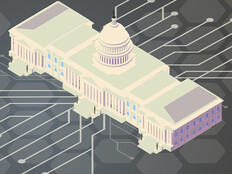Endpoint Security Requires Ruthless Practicality
Building a multilayered security strategy is about being ruthlessly practical. Determine what will have the highest impact at a sensible cost and what will have the lowest time to delivery, then execute on that. The resulting security implementations will vary on an agency-by-agency basis, but this mindset will help IT teams maximize resources, financial and otherwise.
There are certain security measures that generally hit this mark at every organization.
EXPLORE: How endpoint detection and response is protecting agencies against cyberattacks.
First and foremost is anti-virus software. Though not new, anti-virus software continues to be a valuable component to endpoint security. Anti-virus software successfully puts out a lot of fires before they become noticeable. It is both inexpensive and fast to deploy, making it a staple defensive measure that should be a part of all endpoint security.
Zero-trust security is a close second when prioritizing ruthlessly practical measures. This security model can include multifactor authentication and other enhanced identity governance, microsegmentation, device agents, device application sandboxing, and more. Why? Zero-trust network architecture boils down to a simple philosophy: Don’t trust anyone or anything. This doesn’t just go for external parties; internal personnel also are not to be trusted.
The People Aspect of Endpoint Security
The user is part of the endpoint, and despite the fact that most data breaches depend on social engineering, the user is often forgotten. While technical controls are 50 percent of the endpoint security story, people are that other 50 percent.
It’s important to strike a balance between the technical control aspect of endpoint security and the people aspect. If you make something too secure, people won’t cooperate. Consider having to go through multiple multifactor authentication measures to log in to a company device. Many employees may instead choose to work on their personal devices and log in to company devices only as necessary.
LEARN ABOUT: How agencies can better navigate zero-trust.
While having subpar enhanced identity governance might be simpler for employees, it puts employees and entire organizations at risk. The recent Microsoft breach is a prime example of this. In a company post, Microsoft reveals that the group LAPSUS$ would often target and compromise Microsoft employees’ personal accounts, using this as a springboard to search for additional credentials that could be used to access the organization’s system.
Endpoint security isn’t solely about technical controls. By navigating with a ruthlessly practical mindset, both the technical and interpersonal aspects can be brought into balance, ensuring greater endpoint security for the new normal.
This article is part of FedTech’s CapITal blog series. Please join the discussion on Twitter by using the #FedIT hashtag.












